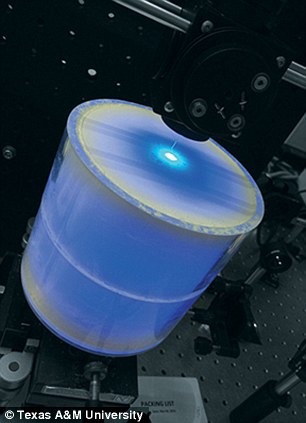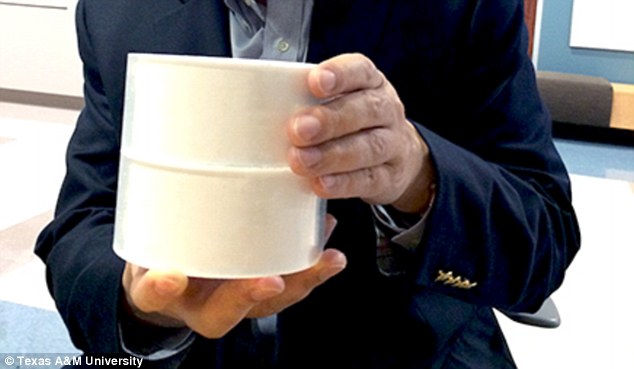People warming the pool-water with their pee, beware. A device has been created that’ll put you to shame in real-time, by glowing the same instant it detects traces of human waste in water. Developed by Texas A&M University researchers, the deviec is basically a container that adds zinc to water ions to detect whether pee/faeces is present in the batch. Traces and extremely small indicators of urine and other wastes have been conventionally difficult to detect, but even that level of contamination can harm health in more ways than one. Vladislav Yakovlev led the research team in developing the device which works by identifying the presence of a chemical called urobilin.

Urobilin is a by-product released with pee and other faecal waste of mammals, and its molecules are so small that they diffuse quickly occupying large volumes, like lakes and reservoirs. When these molecules come in contact with zinc ions, they form a phosphorescent compound which glows green under an ultraviolet light.
In a few samples, the low concentrations of urobilin resulted in weaker phosphorescent emission, and thus the sample was difficult to analyze. To fight this situation, the team developed a technology that excites even the slightest traces of urobilin in large water bodies to have a stronger glow using a “integrated cavity”, which is nothing but a hollow cylindrical container. Water sample is placed within the cylinder where it interacts with zinc ions, and a laser light is beamed through it via a small hole. This light then reacts with the urobilin in water, emitting a glow. Employing this technique, Yakovlev and team have detected the presence of urobilin to a nanomole per liter. Even better, this technology hands out the actual concentration levels of contaminant in water almost instantly.

The team is currently working on commercializing this technology. The applications are many – apart from detecting human waste in water, this could be employed to detect toxic substances in liquids and gases, among other things.
People warming the pool-water with their pee, beware. A device has been created that’ll put you to shame in real-time, by glowing the same instant it detects traces of human waste in water. Developed by Texas A&M University researchers, the deviec is basically a container that adds zinc to water ions to detect whether pee/faeces is present in the batch. Traces and extremely small indicators of urine and other wastes have been conventionally difficult to detect, but even that level of contamination can harm health in more ways than one. Vladislav Yakovlev led the research team in developing the device which works by identifying the presence of a chemical called urobilin.
Urobilin is a by-product released with pee and other faecal waste of mammals, and its molecules are so small that they diffuse quickly occupying large volumes, like lakes and reservoirs. When these molecules come in contact with zinc ions, they form a phosphorescent compound which glows green under an ultraviolet light.
In a few samples, the low concentrations of urobilin resulted in weaker phosphorescent emission, and thus the sample was difficult to analyze. To fight this situation, the team developed a technology that excites even the slightest traces of urobilin in large water bodies to have a stronger glow using a “integrated cavity”, which is nothing but a hollow cylindrical container. Water sample is placed within the cylinder where it interacts with zinc ions, and a laser light is beamed through it via a small hole. This light then reacts with the urobilin in water, emitting a glow. Employing this technique, Yakovlev and team have detected the presence of urobilin to a nanomole per liter. Even better, this technology hands out the actual concentration levels of contaminant in water almost instantly.
The team is currently working on commercializing this technology. The applications are many – apart from detecting human waste in water, this could be employed to detect toxic substances in liquids and gases, among other things.